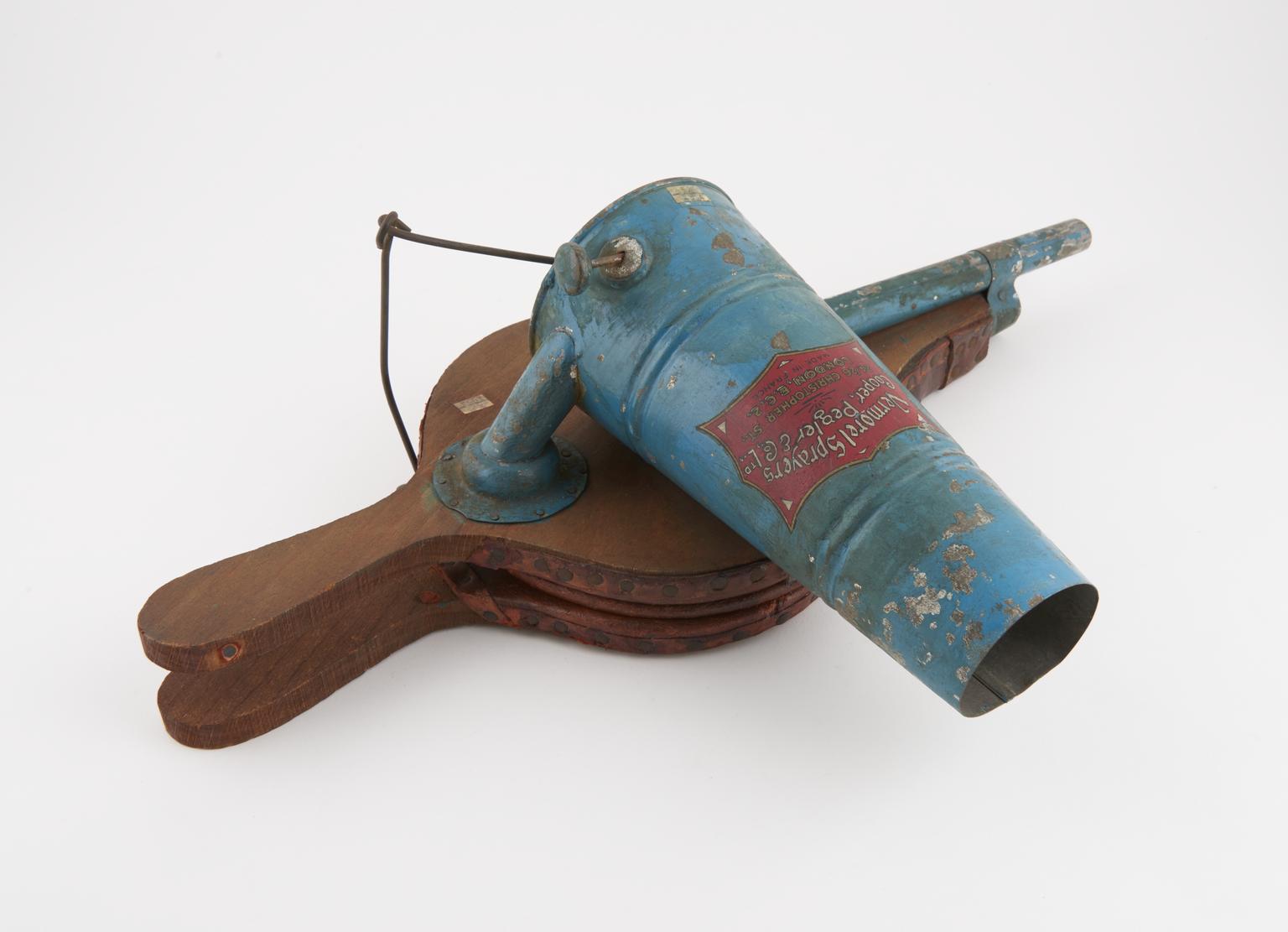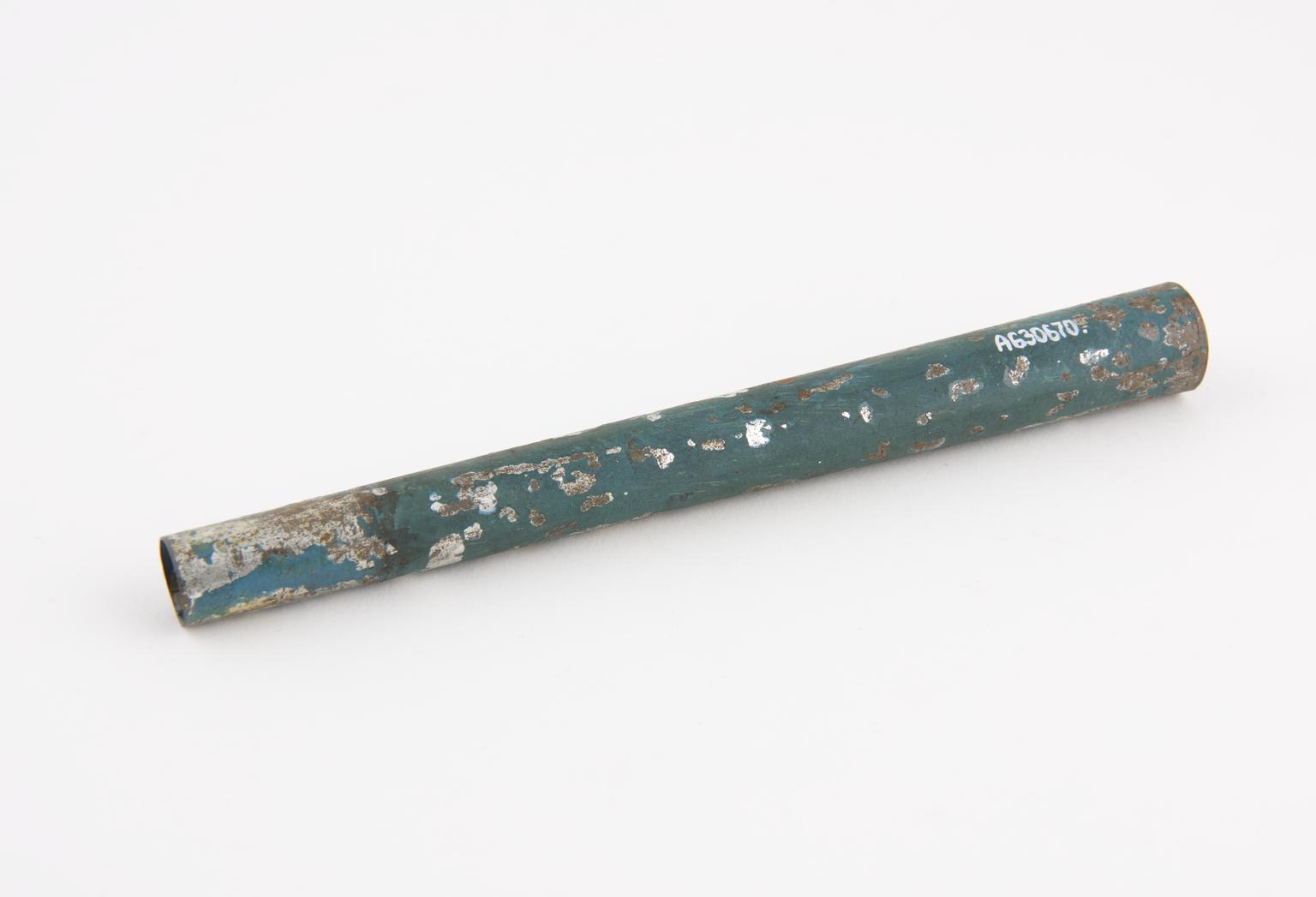
Main body for Paris Green sprayer
Leather bellows and main body of 'Vermorel Sprayer', supplied by Cooper, Pegler and Co., made in France, 1930-1940


Powder spray for Paris Green, supplied by Cooper, Pegler and Co., made in France, c1930
First developed in 1814, ‘Paris Green’ is, as its name implies, a green coloured inorganic compound composed of copper(II) acetate and arsenic trioxide. It was initially developed as a pigment at the Wilhelm Dye and White Lead Company in Schweinfurt, Bavaria and despite its toxicity (due to the arsenic content) the pigment was used throughout the 1800s.
Paris Green is also a powerful insecticide and was the first widespread chemical insecticide in the world by the 1880s. This sprayer was used in the 1920s to kill mosquito larvae in an attempt to control the numbers of this malaria-causing insect. In the years before DDT, this highly toxic chemical was often the first choice for anti-malarial spraying. Huge quantities of it were dropped by aeroplane on parts of Italy, Sardinia and Corsica during 1944 and 1945 to control the disease.
This example was made in France for Cooper, Pegler & Co Ltd, a company that has manufactured a range of sprayers since 1894.

Leather bellows and main body of 'Vermorel Sprayer', supplied by Cooper, Pegler and Co., made in France, 1930-1940



